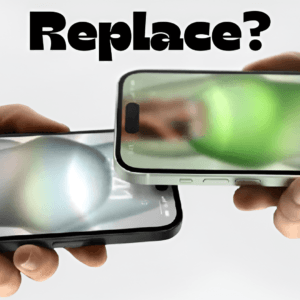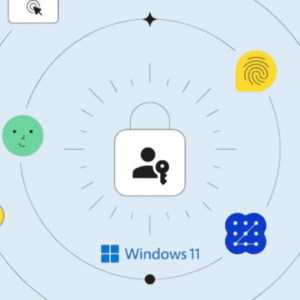If your Mac needs extra love and care and you’re trying to get Recovery Mode to work, it can be super frustrating when it doesn’t cooperate! But hey, no worries; it doesn’t mean your Mac is a lost cause. Sometimes, a missing hard drive connection can cause this issue. Let’s roll up our sleeves, figure out why things aren’t going smoothly, and get you back on track. Follow along and check how to fix the Mac recovery mode that is not working.
1. Verify keyboard and input device functionality
One of the very first things to check if you can’t access your Mac in Recovery Mode is whether your keyboard is functioning properly. Start by checking if the Command and R keys work. If you’re using an external keyboard, inspect it for any physical damage. For wired keyboards, ensure the connection is secure. Lastly, check if dust or debris is interfering with your keyboard’s function.
2. Check power supply
One way to potentially fix a Mac that won’t enter recovery mode is to carefully check its power supply. Make sure your Mac is getting enough power. If you’re using a power adapter, double-check that it’s plugged in correctly on both ends (the wall outlet and your Mac). Also, make sure the adapter and its cables aren’t damaged. Finally, look out for any power outages or flickers in your area, as these can disrupt your Mac’s power supply.
3. Reset SMC
The SMC manages various low-level functions on your Mac. It includes power management, battery behavior, and thermal sensor management. An issue with the SMC can sometimes lead to unexpected problems, such as an inability to enter Recovery Mode. Follow the steps below to reset SMC on your Mac and fix the issue of Mac recovery mode not working:
- Click on the Apple logo in the navigation bar and choose Shut Down.
- Hold down the left Control, left Option, and right Shift keys together for 7 seconds.
- Note: It’s normal behavior if your Mac restarts during this step.
- Next, press and hold the power button (or Touch ID).
- Keep holding all four keys for about 7 seconds, then let go of them.
- Wait a few seconds, and then restart your Mac.
4. Reset NVRAM or PRAM
NVRAM (Non-Volatile Random Access Memory) or PRAM (Parameter Random Access Memory) are small sections of your Mac’s memory that store essential settings like sound volume, display resolution, startup disk selection, and recent kernel panic information.
Corrupted data within the NVRAM or PRAM can interfere with the startup process, including booting into Recovery Mode. Resetting these memory stores forces your Mac to re-detect these settings, potentially clearing glitches that might be hindering the recovery process. Adhere to the simple steps below to reset NVRAM or PRAM on your Mac:
Resetting NVRAM on Intel Macs
- Navigate to the Apple menu and choose Shut Down.
- Press and hold these four keys together as soon as you press the power button: Command + Option + P + R.
- Keep holding the keys until either:
- For the second time, you hear the starter sound.
- For the second time, the Apple logo shows and then vanishes.
- Once you’ve reached the trigger point above, release the keys and allow your Mac to boot normally.
Resetting NVRAM on Apple Silicon Macs (M1, M2, M3, etc.)
NVRAM on Apple Silicon Macs resets automatically on each restart. Simply shut down your Mac and turn it back on.
5. Open Mac in Safe Mode
Safe Mode starts up your Mac with only the essential kernel extensions and system components loaded. This can help isolate whether third-party software, corrupted preferences, or problematic startup items are interfering with Recovery Mode functionality. Follow the steps below to enter Safe Mode, then try entering Recovery Mode again:
Steps for Macs with Apple Silicon
- In the top left corner of your screen, click the Apple logo and choose Shut Down from the options.
- Press and hold the power button and wait till you see Loading startup options appear on the screen.
- Choose your startup disk.
- Press and hold the Shift key. Now, click Continue in Safe Mode.
- Release the Shift key, and if requested, then log in to your Mac again.
Steps for Macs with Intel Processors
- If your Mac is on, click the Apple logo and select Shut Down.
- Now restart your Mac and press the Shift key as your Mac starts up.
- When you see the login window on your Mac, release the Shift key. If asked, then log in to your device again.
6. Update macOS to the latest version
If you’re encountering issues with Mac Recovery Mode not functioning as expected, updating macOS to the latest version could potentially resolve the problem. Outdated operating systems can contain bugs or compatibility problems that interfere with core system functions, including Recovery Mode. Here’s why it’s worth trying:
- Visit the Apple website to determine if your Mac model is compatible with the latest version of macOS.
- Click the Apple icon in the top-left corner of your screen. Choose System Settings (for macOS Ventura or later) or System Preferences (for older macOS versions).
- Select General in the sidebar, then head to Software Update from the right.
- Click the Software Update icon. If an update is available, you’ll see Upgrade Now or Download and Install options. Click the appropriate button.
- If your Mac is up-to-date, you’ll see a corresponding message.
- Enter your administrator password when prompted.
- Your Mac will now download the update and then guide you through the installation process.
Note: Your Mac will normally restart automatically during the installation. Don’t interrupt this process.
7. Repair disk and file system using Disk Utility
Repairing disk and file system issues using Disk Utility can be vital in troubleshooting a Mac recovery mode that isn’t working. Corruption in your Mac’s primary hard drive or file system might prevent the recovery mode from loading correctly. Here’s how you can do so:
- Launch Spotlight on Mac by pressing the Command + Space bar on your Mac.
- Type Disk Utility in the search box and click on the Disk Utility application from the results.
- In the sidebar, look for the internal disk (labeled Macintosh HD.)
- Select the specific volume within that disk (usually Macintosh HD – Data).
- Click the First Aid button and press Run in the pop-up window.
- Disk Utility will now check the disk and attempt repairs. If errors are found, follow the on-screen instructions.
8. Rebuild the Recovery HD partition
If your Mac’s hard drive structure is compromised, the essential Recovery HD partition might be damaged or missing. This partition holds critical tools like Disk Utility, Time Machine, and the macOS installer, making it vital for troubleshooting.
One solution for a broken recovery mode is to rebuild the Recovery HD partition. This process involves using Terminal commands and may require formatting your drive. Be sure to back up all important data before proceeding, as there’s a potential risk of data loss.
9. Boot from an external drive
When your Mac’s built-in recovery mode fails, booting from an external drive provides a powerful workaround. You essentially bypass the broken internal recovery system by creating a bootable installer with a fresh copy of macOS on a USB flash drive or external hard drive.
This allows you to use Disk Utility to repair disk errors, reinstall macOS, or restore from a Time Machine backup as versatile tools to regain control when standard troubleshooting fails.
10. Use Internet Recovery Mode
Internet Recovery Mode can be a lifesaver when your Mac’s standard Recovery Mode fails. Follow the steps below to access this mode:
- Click on the Apple icon, choose Shut Down, and wait for your Mac to turn off completely.
- Hold down the power key on your Mac, and when you see the Loading startup options screen, release the power key.
- Click Options, and then select Continue.
- Choose a disk volume and click Next.
- Select the administrator’s account. Click Next and enter the password for the admin account.
- Finally, click the Continue button to enter Recovery Mode on your Mac.
11. Check for third-party software conflicts
While less common, certain third-party software or kernel extensions can interfere with the Mac’s startup process, including booting into Recovery Mode. If the previous solutions fail, consider temporarily uninstalling any recently installed software, particularly utilities that interact with system functions or disk access. This can help isolate if a conflicting program is preventing Recovery Mode from launching.
12. Contact Apple support
When troubleshooting issues with Mac recovery mode not functioning as expected, contacting Apple support can be the ultimate solution. Despite exhaustive online resources and community forums, some complexities might require expert intervention.
Whether it’s a software glitch, a hardware issue, or an obscure configuration problem, reaching out to Apple support ensures comprehensive support to resolve the issue efficiently.
Focus on proactive maintenance
While Mac Recovery Mode can be a bit finicky, don’t give up! With a bit of troubleshooting and the right approach, you can fix the issue of Mac recovery mode not working. Patience and methodical steps are often the keys to solving even the most stubborn tech issues.
Was this helpful?
Nutan is a BCA graduate with a keen interest in the world of consumer technology. A fan of both the Apple and Google ecosystems, he enjoys exploring the latest gadgets and how they can enhance our daily lives. Nutan specializes in crafting clear and informative how-to guides and comprehensive buying advice. His insightful reviews offer an in-depth look at the pros and cons of the newest tech products, helping readers make the best decisions for their needs.







